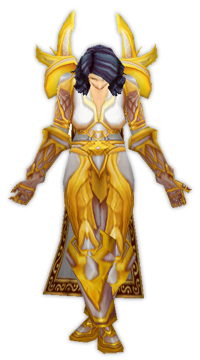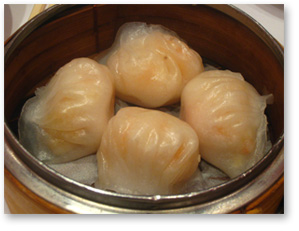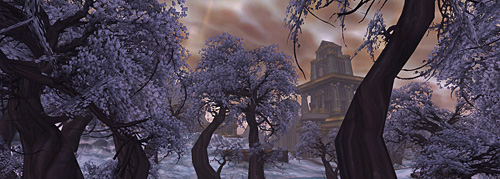As with previous guides, two things to note:
- I’m recommending consumables that give you a good balance of stats, where feasible. If you’re very well-geared in one area and need to boost a specific stat, you can make your own choices.
- My recommendations are specific for holy paladins. If you’re a priest, all those +Spirit consumables I wrote off are great for you. If you’re a protection paladin trying to heal, anything with spell crit is relatively useless and you’re looking for all the mp5 you can get. Et cetera.
In addition, this guide is for consumables buffing your primary function: healing. Occasionally you might need to use consumables to increase your stamina, resistances or other stats; however, they’re outside the scope of this guide.
Potions
Potions are a lot less useful in WotLK than in TBC, thanks to the new mechanic whereby you can only take one potion per combat, regardless of cooldown. Still, they shouldn’t be dismissed. Your options:
 Mana & Health Restoration
Mana & Health Restoration
These are all affected by alchemist-only Alchemist Stone trinkets, increasing their mana/health restoration effects by 40%, unless otherwise mentioned.
Runic Mana Potion. This stacks to 5; combine 20 of them with a Mana Injector Kit to create Runic Mana Injectors, which are exactly the same as the potions except they stack to 20. You should always carry at least some mana potions, for OOM moments.
Runic Healing Potion and its Injector equivalent, Runic Healing Injector. If your mana regen isn’t reliant on potions – and it shouldn’t be, in WotLK – then these are often a more useful tool for low health “oh crap!” moments. You should always take at least some to a raid with you.
Powerful Rejuvenation Potions can be a useful option, but you’re likely to find they don’t restore enough of either health or mana to be worth using. These may not be affected by an Alchemist’s Stone. (Anyone know?)
Potion of Nightmares lasts for six seconds, and (unlike the old Dreamless Sleep potions) can’t be cleansed off you accidentally by a clueless raider trying to be helpful. It restores 5400 health and mana in three ticks; if you can’t get all three ticks you’re better off using a Runic potion instead. You can move to interrupt the effect if you desperately need to heal, but that will waste a tick or two.
Crazy Alchemist’s Potion is currently a random effect between buffs or health/mana restoration; in Patch 3.0.8 (going live today) it’s being changed to always restore health & mana, with random side-effects. These are Alchemist-only, and are currently not affected by the Alchemist’s Stone trinkets.
Other Potions
These share the same one-per-combat limitation as health & mana potions, but are a very good alternative if you’re not relying on Mana potions for regen purposes.
Potion of Speed – a great throughput potion for those ‘clutch heal’ moments, where you have to crank out a lot of healing very, very fast.
Potion of Wild Magic – similarly, good for boosting throughput at a critical moment.
Your choice between the potions is best made with reference to your own gear – for instance, if you’re already high on Haste, you might be better choosing the Wild Magic potion. However, whichever you prefer, everyone should carry a stack of one of these for emergency healing moments. (Unless you’re cruising through farm content that’s trivial for you, in which case you’re probably not using full consumables anyway.)
Flasks and Elixirs
You can use either one flask, or two elixirs (one battle elixir and one guardian elixir). Generally, two elixirs is more effective than one flask, but a flask lasts through death where an elixir doesn’t, making them economical for progression raiding.
If you’re an alchemist, you’ll get increased effect and/or duration from the Mixology effect when you’re using flasks or elixirs you can make yourself.
 Flasks
Flasks
Two choices here: the Flask of the Frost Wyrm for throughput, or the Flask of Pure Mojo for mana longevity. As a general rule, throughput is probably more important, but if you’re having troubles with going OOM consider switching to the Pure Mojo flask.
Edit: Two commenters have reminded me of the Flask of Distilled Wisdom, which is a pre-TBC-level recipe. If you still have access to the mats, this flask can be a better regen option than the Pure Mojo flask – if you have the right raid composition. Based on the maths outlined in this post, Distilled Wisdom beats Pure Mojo if you have access to a resto shaman and better than 72% Replenishment uptime. If you don’t have a resto shaman, or can’t rely on getting reliable Replenishment, the Flask of Pure Mojo is still better for regen purposes (although Distilled Wisdom also adds spellpower and crit chance).
 Battle Elixirs
Battle Elixirs
Your options:
Your choice is really up to you, depending on your balance of stats and what you need to boost. As a rule of thumb, I would recommend using the Spellpower Elixir while you’re still gearing up; once you’re reasonably well-geared, use the Haste or Crit elixirs instead, as they still boost your throughput and also enable you to respond faster when things go wrong.
Guardian Elixirs
Your choices:
Looking purely at the regen effects of Intellect, the principles outlined in this post tell us that: if you have a resto shaman in your raid and at least 50% Replenishment uptime, 45 Intellect is better than 24 mp5. The more access to Replenishment you have (more shadow priests, survival hunters and retribution paladins), the greater the relative value of Intellect. With 90% Replenishment uptime, the Intellect is worth just under 28 mp5 – plus it boosts your spellpower and crit chance to boot.
If you have no resto shammy, and none of the Replenishment specs in your raid, 45 Intellect is worth about 16 mp5. Under those conditions, you’re probably better off with the mp5 elixir; otherwise, choose the Intellect elixir.
Buff Foods
 Now this is where you’re spoilt for choice.
Now this is where you’re spoilt for choice.
There are four types of food buffs that might be of interest to you: Spellpower, Haste, Crit or mp5. Each food buff comes in greater and lesser versions; the stats of the greater version are higher, but making these foods requires doing the cooking dailies for the recipes, and ingredients that only come from the cooking dailies (or for a premium on the auction house). For each buff type and size, there’s one food from fishing and one from land-based mobs.
All of these food buffs are comparable, and you’re best off choosing a food buff that balances your stats. Speaking personally, I use the 12 mp5 food as a cheap stam buff food for trash and easy bosses, and the 40 Haste or 40 Crit buff food on boss fights as appropriate.
Spellpower:
46 Spellpower & 40 Stamina: Firecracker Salmon, Tender Shoveltusk Steak, Fish Feast
35 Spellpower & 40 Stamina: Smoked Salmon, Shoveltusk Steak, Great Feast
Haste Rating:
40 Haste Rating & 40 Stamina: Imperial Manta Steak, Very Burnt Worg
30 Haste Rating & 40 Stamina: Baked Manta Ray, Roasted Worg, Shoveltusk Soup (available only as a quest reward),
Crit Rating:
40 Crit Rating & 40 Stamina: Spicy Blue Nettlefish, Spiced Wyrm Burger
30 Crit Rating & 30 Stamina: Poached Nettlefish, Wyrm Delight, Succulent Orca Stew (available only as a quest reward),
mp5:
16 mp5 & 40 Stamina: Spicy Fried Herring, Mighty Rhino Dogs
12 mp5 & 40 Stamina: Pickled Fangtooth, Rhino Dogs
Other Foods
These aren’t buff food, but worth mentioning anyway: if you’re going to be fishing for the raw materials for the above buff foods, you may find it useful to stock up on the fish used to make Grilled Bonescale, Sauteed Goby, or Smoked Rockfin. All three foods give the same amount of mana and health as the Conjured Mana Strudel from mage tables, and it can be handy to carry a stack of the cooked fish as an alternative for when you don’t have a mage on hand for free strudel. (Particularly useful for 10-man raid groups who may not have regular access to a mage.)
 Some information has started to trickle out from Blizzard about the way loot will work in the next tier of raid content. Some of it’s what I expected, some of it surprises me.
Some information has started to trickle out from Blizzard about the way loot will work in the next tier of raid content. Some of it’s what I expected, some of it surprises me. (Source: this post by Kalgan.)
(Source: this post by Kalgan.) (Sources: these posts from Bornakk: 1, 2, 3, 4)
(Sources: these posts from Bornakk: 1, 2, 3, 4) A couple of points to note:
A couple of points to note: Just
Just 





 Last year, I
Last year, I  Mana & Health Restoration
Mana & Health Restoration Flasks
Flasks Battle Elixirs
Battle Elixirs Now this is where you’re spoilt for choice.
Now this is where you’re spoilt for choice.

